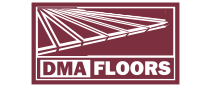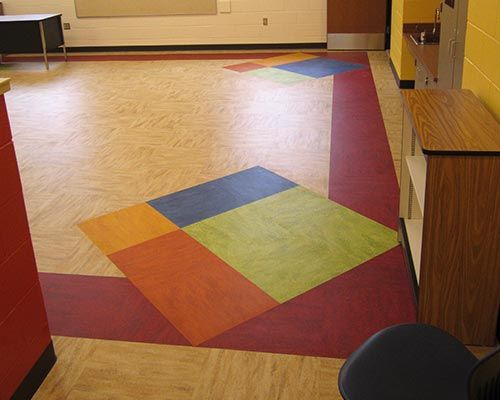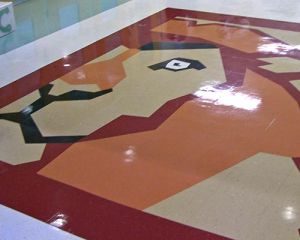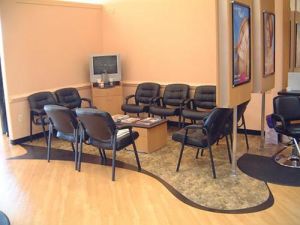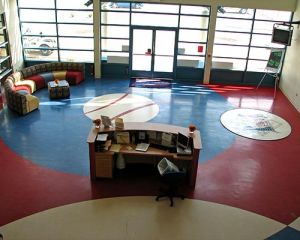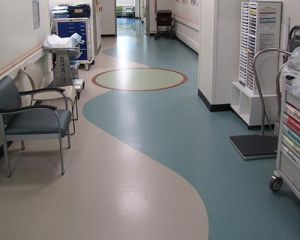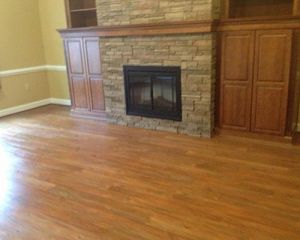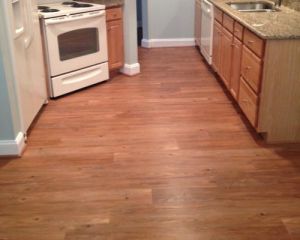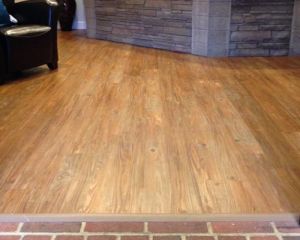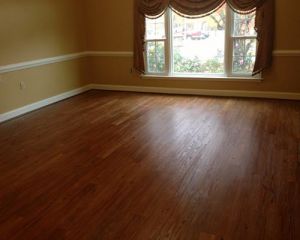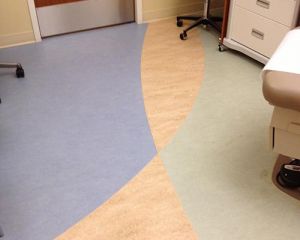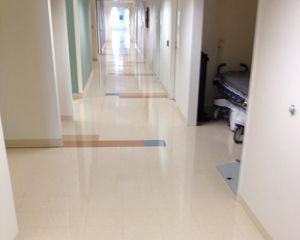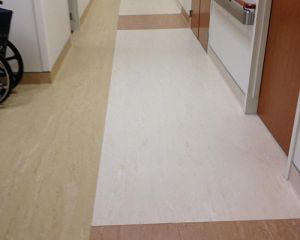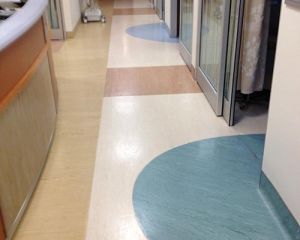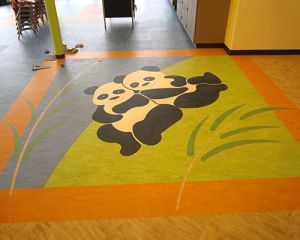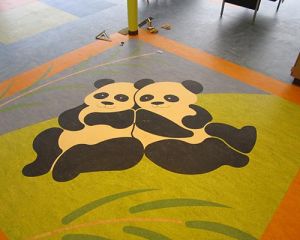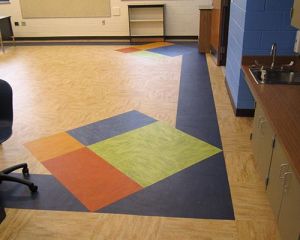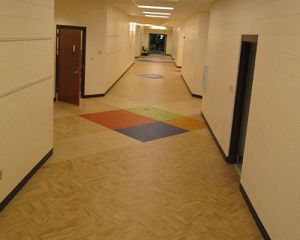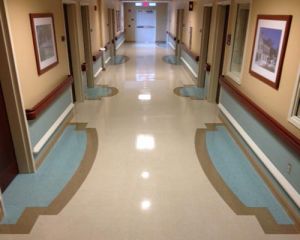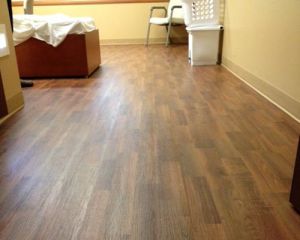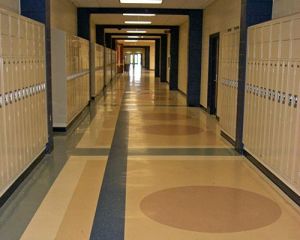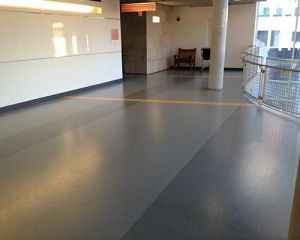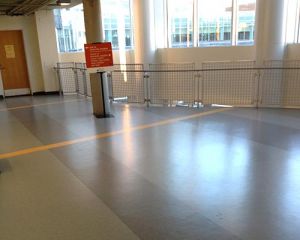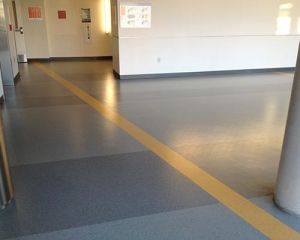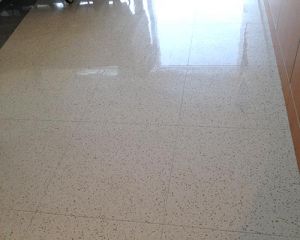Performance Considerations
The following table demonstrates most common concerns, testing specification and the desired result.
| Concerns | Test Method | Desired Result |
| Maintenance | Manufacturer's Instructions | Clean, low maintenance, slip resistant floor |
| Wear | ASTM D3389 | Material loss of <100 grams |
| Chemical/Stain Resistance | ASTM F925 | Passes if stain can be removed after exposure to chemical after 24 hours |
| UV Stability | ASTM F1515 | Color changes < 8 units after 300 hours of xenon light exposure (200 hours for linoleum tiles) |
| Flexibility | ASTM F137 | No cracking, breaking, or whitening when bent to desired radius |
| Durability | ASTM F1914, F970 | After removal of specified load, little to no mark is apparent |
The following tables provide some pros and cons of the various resilient options.
Vinyl Sheet
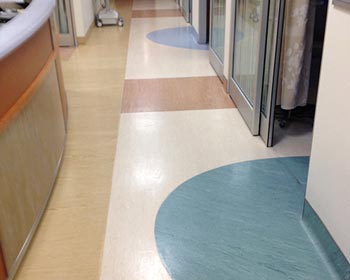
| Pros | Cons |
| Wide variety of styles, patterns and colors | Depending on the quality of product, can wear over time |
| Topical water resistance | Can be slippery when wet |
| Can be cushioned to enhance comfort and lessen acoustic effects. | Medium life cycle on most products |
| Can be heat welded to make seams impervious/sanitary | MVE Sensitive |
| Antistatic options | |
| No wax, no polish options | |
| Can be flash coved for integral sanitary base |
Vinyl Tile
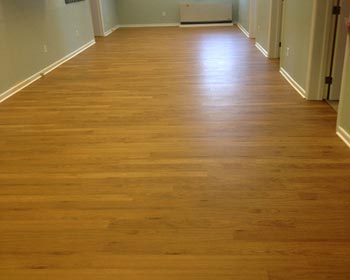
| Pros | Cons |
| Wide variety of styles, colors and patterns | Depending on quality of product, can wear over time |
| Can use to create geometric patterns and borders | More seams |
| Easy to replace damaged tiles | Medium life cycle on most products |
| Can be cushioned to enhance comfort and lessen acoustic effects. | Can be slippery when wet |
| No wax, no polish options | MVE Sensitive |
| Anti-static options |
Rubber Sheet
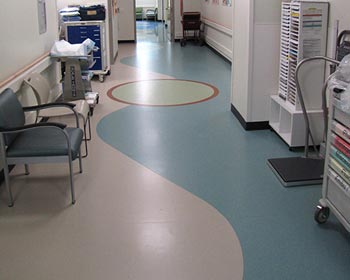
| Pros | Cons |
| Wide variety of styles, colors and patterns | Higher initial installation costs |
| Excellent wear characteristics | Most products are not resistant to petroleum products, animal fats or vegetable oils |
| Topical water resistance | Cold welding has a long cure time and can damage surrounding areas if tracked |
| Quiet and comfortable under foot | MVE Sensitive |
| Seams can be hot or cold welded | Sheet rubber requires a high degree of installer skill. |
| Low maintenance, no waxing | |
| Insulating thermal capabilities | |
| Long life cycle | |
| Not slippery when wet |
Rubber Tile
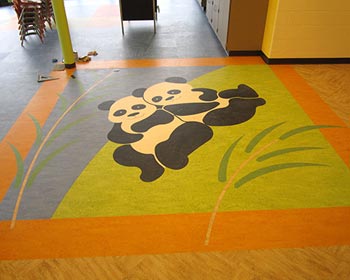
| Pros | Cons |
| Wide variety of styles, colors and patterns | More Seams |
| Can use to create geometric patterns and borders | Most products are not resistant to petroleum products, animal fats or vegetable oils |
| Easy to replace damaged tiles | High initial cost |
| Quiet and comfortable under foot | MVE Sensitive |
| Low maintenance, no waxing | |
| Insulating thermal capabilities | |
| Long life cycle | |
| Excellent wear characteristics | |
| Not slippery when wet |
Linoleum Sheet and Tile
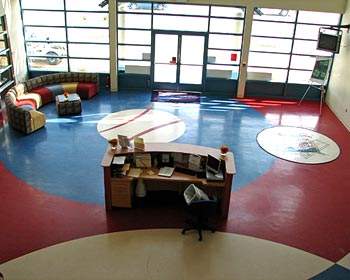
| Pros | Cons |
| Wide variety of colors | Not recommended for wet areas or bathrooms |
| Easy to replace damaged tiles | Can be slippery when wet |
| Can be cushioned to enhance comfort and lessen acoustic effects. | Will change color when exposed to UV and as product cures. |
| Available in sheet or modular forms for versatile looks | Difficult to heat weld and flash cove |
| Subtle styling effects | Requires a skilled installer |
| Made of all natural materials | |
| Long life cycle |
VCT
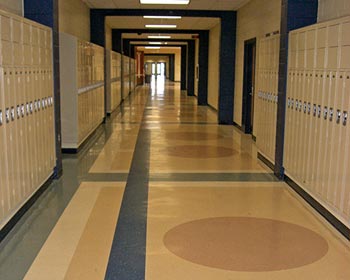
| Pros | Cons |
| Can be used to create geometric patterns and borders | Requires regular maintenance and waxing |
| Lowest initial installed cost | Unsanitary conditions can occur if not cleaned prior to waxing |
| Static dissipative options | More seams than sheet goods |
| Very Poor life cycle | |
| Very slippery when wet | |
| MVE Sensitive | |
| Very low PSI rating |
Static Load Limits
Current static load testing is typically performed according to ASTM F970 Standard Test Method for Static Load Limit. The test is designed to evaluate a flooring product's ability to withstand and recover from indentation. The test places a point load over a specified area for 24 hours. Then the load is removed and the area allowed to recover for an additional 24 hours. At that point the residual indentation is measured and passes if no greater than 5 mils. The problem with this test is that it is performed on an uninstalled product. An installed product will often show worse and sometimes much worse performance. There is also no static load requirement higher than 250 PSI, which may not cover heavy objects or lighter objects with a small floor contact and increased point load.
